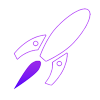Welcome back to Messier Monday! We continue our tribute to our dear friend, Tammy Plotner, by looking at the the Big Ring itself, the planetary nebula known as Messier 57. Enjoy!
In the 18th century, while searching the night sky for comets, French astronomer Charles Messier kept noting the presence of fixed, diffuse objects in the night sky. In time, he would come to compile a list of approximately 100 of these objects, with the purpose of making sure that astronomers did not mistake them for comets. However, this list – known as the
Messier Catalog
– would go on to serve a more important function.
One of these objects is known as Messier 57, a planetary nebula that is also known as the Ring Nebula. This object is located about 2,300 light years from Earth in the direction of the
Lyra constellation
. Because of its proximity to Vega, the brightest star in Lyra and one of the stars that form the
Summer Triangle
, the nebula is relatively easy to find using binoculars or a small telescope.
What You Are Looking At:
Here you see the remainders of a sun-like star... At one time in its life, it may have had twice the mass of Sol, but now all that's left is a white dwarf that burns over 100,000 degrees kelvin. Surrounding it is an envelope about 2 to 3 light years in size of what once was its outer layers - blown away in a cylindrical shape some 6000 to 8000 years ago. Like looking down the barrel of a smoking gun, we're looking back in time at the end of a Mira-like star's evolutionary phase.
It's called a planetary nebula, because once upon a time before telescopes could resolve them, they appeared almost planet-like. But, as for M57, the central star itself is no larger than a terrestrial planet! The tiny white dwarf star, although it could be as much as 2300 light years away, has an intrinsic brightness of about 50 to 100 times that of our Sun.
One of the most beautiful features of M57 is the structure in the ring itself, sometimes called braiding - but scientifically known as "knots" in the gaseous structure. As C.R. O'Dell (et al) indicated in their
2003 study
:
However, examining things like planetaries nebulae in different wavelengths of light can tell us so much more about them. Behold the beauty when see through the Spitzer Space Telescope! As M.M. Roth explained in a
2007 study
:
History of Observation:
This deep space object was first discovered in early January 1779 by Antoine Darquier who wrote in his notes:
Although Darquier did not post a date, it is believed his observation preceded Messier's independent recovery made on January 31, 1779 when he states that Darquier picked it up before him:
A few years later, Sir William Herschel would also observe Messier Object 57 with his superior telescope and in his private notes he writes:
Admiral Smyth would go on in later years to add his own detailed observations to history's records:
Since Sir John's observation, the powerful telescope of Lord Rosse has been directed to this subject, and under powers 600, 800, and 1000, it displayed very evident symptoms of resolvability at its minor axis. The fainter nebulous matter which fills it, was found to be irregularly distributed, having several stripes or wisps in it, and the regularity of the outline was broken by appendages branching into space, of which prolongations the brightest was in the direction of the major axis.
Locating Messier 57:
M57 is a breeze to locate because it is positioned between Beta and Gamma Lyrae (the westernmost pair of the lyre's stars), at about one-third the distance from Beta to Gamma. While it is easily seen in binoculars, it is a little difficult to identify because of its small size, so binoculars must be very steady to distinguish it from the surrounding star field.
In even a small telescope at minimum power, you'll quickly notice a very small, but perfect ring structure which takes very well to magnification. Despite low visual brightness, M57 actually takes well to urban lighting conditions and can even be spied during fairly well moonlit nights. Larger aperture telescopes will easily see braiding in the nebula structure and often glimpse the central star. May you also see the many faces of the "Ring"!
[caption id="attachment_137301" align="aligncenter" width="580"]
The location of Messier 57 in the Lyra Constellation. Credit: IAU and Sky & Telescope magazine (Roger Sinnott & Rick Fienberg)[/caption]
And here are the quick facts on Messier 57 to help you get started:
- Object Name
-
Messier 57
- Alternative Designations
-
M57, NGC 6720, the "Ring Nebula"
- Object Type
-
Planetary Nebula
- Constellation
-
Lyra
- Right Ascension
-
18 : 53.6 (h:m)
- Declination
-
+33 : 02 (deg:m)
- Distance
-
2.3 (kly)
- Visual Brightness
-
8.8 (mag)
- Apparent Dimension
-
1.4x1.0 (arc min)
We have written many interesting articles about Messier Objects here at Universe Today. Here's Tammy Plotner's
Introduction to the Messier Objects
,
M1 – The Crab Nebula
, and David Dickison's articles on the
2013
and
2014
Messier Marathons.
Be to sure to check out our complete
Messier Catalog
. And for more information, check out the
SEDS Messier Database
.
Sources:
 Universe Today
Universe Today
